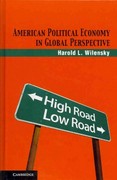Answered step by step
Verified Expert Solution
Question
1 Approved Answer
Answer the questions correctly.,,, 1) fixed coupon bond , 20 years left until maturity , coupon rate 6% , yield of bond 6.2% , paid
Answer the questions correctly.,,,
1) fixed coupon bond , 20 years left until maturity , coupon rate 6% , yield of bond 6.2% , paid semi annual
What is bond's price
2) fixed coupon bond, 12 years left until maturity , coupon rate 7% , price of bond is $1060.00 , paid semi annually
What is annual yeld to maturity % ?
3) fixed coupond bond , 10 years left until maturity , trading at a yield of 6% , price of bond is $1223.16 , paid semi annually.
What is coupon rate % ?



Step by Step Solution
There are 3 Steps involved in it
Step: 1

Get Instant Access to Expert-Tailored Solutions
See step-by-step solutions with expert insights and AI powered tools for academic success
Step: 2

Step: 3

Ace Your Homework with AI
Get the answers you need in no time with our AI-driven, step-by-step assistance
Get Started


